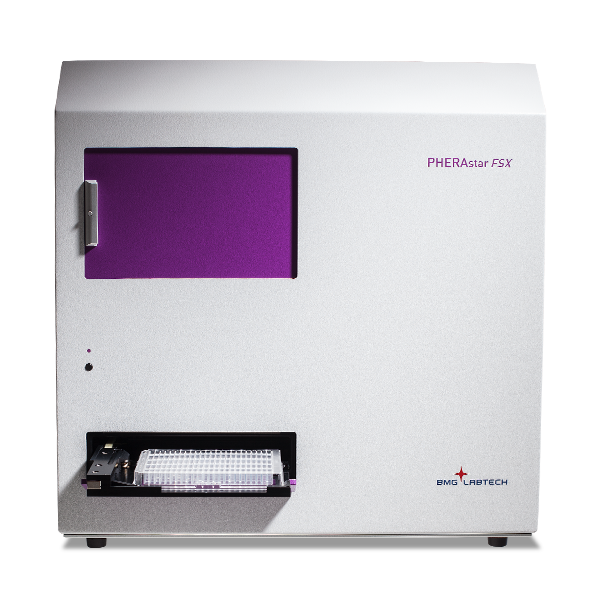
Colorimetric and turbidimetric analysis of endotoxins using the absorbance detection mode
Torn between a colorimetric or turbidimetric LAL assay? Whichever path you take, BMG LABTECH’s absorbance readers deliver dependable results every time.
El PHERAstar FSX es el lector más novedoso y rápido para High-Throughput Screening, combina su altísima sensibilidad con rapidísimos tiempos de lectura. Gracias al sistema único de módulo óptico, Emisión dual simultanea, Tecnología de Rango Dinámico Incrementado, espectrometro UV/vis, sistema AAS y AlphaScreen® y TRF lásers dedicados, el PHERAstar FSX realizará su ensayo con rapidez y facilidad, hasta en microplacas de 3456 pocillos.



No se preocupe por que filtro o dicróico esté instalado en su PHERAstar FSX. Los Módulos Ópticos son muy fáciles de manejar y contienen los filtros, espejos, dicróicos y/o polarizadores para cada aplicación y son reconocidos automáticamente por el lector. Además el PHERAstar FSX está equipado con 4 tubos fotomultiplicadores (PMTs) que son seleccionados automáticamente para cada modo de detección, así como para Emisión Simultanea Dual.
El Rango Dinámico Incrementado y la tecnología de enfoque automático hacen la configuración manual superflua y la optimización de la detección más fácil que nunca.
Para fines de automatización de HTS, el PHERAstar FSX pede ser integrado con facilidad en sistemas automatizados, y ofrece capacidades mejoradas de integracion robótica y control multiusuario.
El PHERAstar FSX es solo para uso en investigación.



Torn between a colorimetric or turbidimetric LAL assay? Whichever path you take, BMG LABTECH’s absorbance readers deliver dependable results every time.
Streamline your workflow and double your insights: multiplexing cellular signal responses of multiple second messengers in a single measurement saves valuable time and conserves reagents.
Perform the PYROSTAR ES-F/Plate LAL test your way— BMG LABTECH readers support both turbidimetric and nephelometric evaluation for maximum flexibility.
Do you want to make your MIC measurements more efficient and automated? Find out here how BMG LABTECH microplate readers can support you in this task.
Do you want to streamline your endotoxin detection workflow? Check out what the combination of VANTAstar and ENDOZYME II can do for you.
Plan to analyse ion channels with a thallium-sensitive dye but don't have an imager? No problem! This adapted assay allows high-throughput detection of ion channel activity on a microplate reader.
Intelligent microplate incubation
Microplate handling system
Low-volume measurements
Filters for a wide range of applications
Functional Microplate Reader Validation